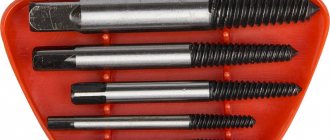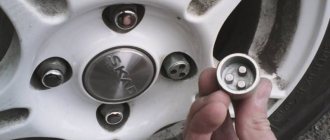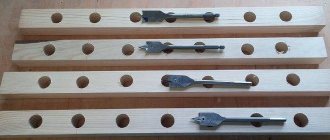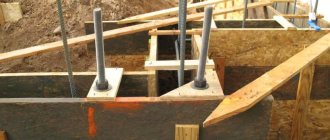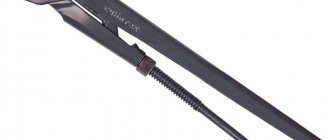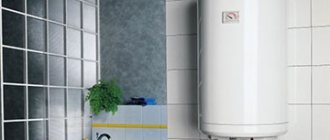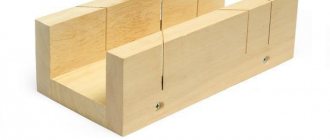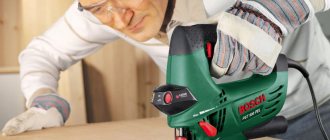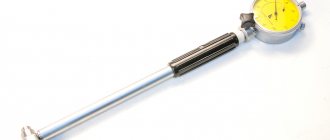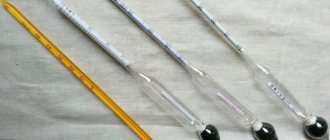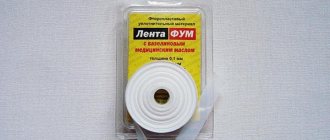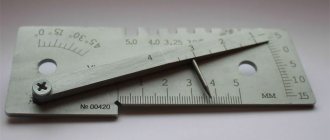What is an extractor - design and types
An extractor is a useful tool that is designed to remove deformed threaded connections. Structurally, the tool is a bit or punch, which consists of two parts:
- Working - has a wedge-shaped thread, which is cut to the left (for fasteners with a left-hand thread, devices with a right-hand thread are used)
- Shank - hexagonal or tetrahedral shape, which is needed to connect an additional tool - a wrench, die holder or screwdriver
Manufacturers produce extractors of different sizes, which is important, since threaded connectors have different diameters. That is why extractors are sold in sets, which allows you to use a suitable attachment if necessary, when you need to unscrew a broken bolt. The most popular sizes of extractors are from M1 to M16.
The devices differ in design, and they are:
- Wedge-shaped - they have the shape of a cone without threaded edges.
The principle of their operation is that a hole is drilled in the stuck part of the bolt. The diameter of the drilled hole should be such that the extractor engages tightly with the stuck bolt. The nozzle is lightly driven into the drilled hole, and then the stuck bolt is unscrewed using a wrench. The tool is easy to use, but to achieve a positive result, you should drill a hole in the stuck bolt strictly in the center. Misalignment of the hole can cause the tool to break. - Spiral or threaded - have wedge-shaped rods with threaded or spiral edges.
The difference between spiral and threaded ones lies in the reliability of engagement. The principle of operation of such devices is that a hole is first drilled in the stuck fastening joint, and then the extractor rod is screwed in a counterclockwise direction. After the rod is securely engaged, the stuck bolt is unscrewed. If a bolt with a left-hand thread is stuck, then it is necessary to use extractors with cutting edges in the right direction, that is, vice versa - Rod - have a shortened shape of the working part, which consists of straight edges and with perpendicular slots.
Rod-type extractors resemble taps for cutting threads on nuts. The operating principle of such devices is also similar to taps. A core is used to make a mark in the center, after which the rod extractor is screwed in in a counterclockwise direction. As soon as the edges of the nozzle engage with the stuck bolt, jamming occurs and then it is unscrewed
The most popular are the spiral type models. For the manufacture of devices, high-strength alloy steel is used, which is why the cost of the tools is appropriate. Wedge-shaped extractors are the cheapest, but they are not effective in the following situations:
- When there is no space to drive a wedge into the hole
- When blows with a hammer can destroy the integrity of the entire device into which the broken bolt is screwed
Spiral devices eliminate the disadvantages of wedge-shaped extractors, however, to use them, a hole must first be drilled. If the broken bolt is in a hard-to-reach place and it is impossible to get to it with a drill, then rod extractors are used. Rod devices have hexagonal shanks for mounting in a drill or screwdriver chuck.
This is interesting!
It should be understood that extractors are used in the most extreme cases, when the head on the bolt is torn off flush. If the edges of the head are licked off, then you can unscrew the bolt using special clamping pliers - a hand vice.
Main types of extractors
Depending on the design and operational features, bolt removal is divided into several types and modifications. He can be:
- Wedge-shaped. The product has a faceted conical shape; during operation it is used as a wedge, which must be driven into an already prepared hole on the broken base of a stuck pin. After driving in and fixing the tool, it must be gradually turned out using a wrench. Using such an extractor is absolutely easy; the main thing to remember is that the hole that is drilled for it should be placed directly in the center of the base of the fastener. If this is not maintained, then the force applied during rotation will be displaced, which will not allow the broken element to be removed. Moreover, there is a possibility of breakdown of the device itself.
- Sterzhnev. It is a faceted rod and its operating principle is in many ways similar to a wedge-shaped tool. It should also be hammered into the drilled hole in the broken pin, wedged and unscrewed with a wrench. The main disadvantage of the rod device is the difficulty of removing it from the unscrewed part.
- Spiral-screw. It is the most common, convenient and effective device for unscrewing broken bolts. It also has a cone-shaped shape, only it already has a special left-handed or right-handed thread cut into it (for unscrewing left-handed threads). These types of extractors are not driven into the part, but are screwed into drilled holes in the fasteners, wedged and, together with the fasteners, are slowly removed. It is worth noting that when using it, a special wrench is required instead of a wrench.
What are extractors used for and what fasteners can be unscrewed with them?
The design of extractors is described in detail, but for what purposes can such cutting attachments be used? The devices in question are used for unscrewing any types of fastening connections - aluminum, steel, plastic, hardened and other types of bolts, self-tapping screws. It is very difficult to drill a hole in a hardened bolt, so to make the work easier, you should heat it and temper the metal.
Extractors are used to remove broken bolts from the following parts:
- From a car engine block - and this applies not only to outdated car brands, but also to modern foreign cars. When assembling a vehicle, defective parts are encountered, which are identified directly by the vehicle owners. When dismantling the engine block, a set of extractors will help you unscrew a bolt with a torn head.
- From the car hub - not all car models use nuts to tighten wheels, but also bolts. When tightening or unscrewing the bolts that secure the wheel, the cap can be torn off. This unpleasant situation can be solved by using extractors, without the need to replace the hub
- From the valve cover. Often the bolts remain in the valve covers and cylinder head, which can be removed using a set of extractors. Car owners are advised to acquire such an indispensable tool as extractors for unscrewing broken bolts
- From a concrete wall. You've probably encountered a situation where, when screwing a self-tapping screw or mounting bolt into a wall, it becomes deformed. Such malfunctions can be solved simply by using an appropriately sized extractor.
- Ignition switch in a car - when it becomes necessary to replace the ignition switch on a car along with the mounting frame in which it is installed, this is problematic. The steel frame of the ignition switch is secured with special disposable bolts (vandal-proof). To unscrew them, you will need to use extractors.
- Damage to the spark plug - when unscrewing, this part on the car can be damaged. Such cases, although rare, are quite appropriate. To unscrew the remainder of the broken spark plug, you should use an extractor. The task is complicated by the design of the engine, since on most modern cars the spark plugs are located in the shafts
- Small bolts - often when repairing phones, laptops and tablets, a problem arises when one of the remaining screws refuses to unscrew. It is impossible to find such a small extractor, since they are not produced. There are several current methods to solve the problem. The first is to use a thin drill bit. A through hole is drilled in the screw, after which the fastener can be removed. The second is to glue the screwdriver blade with epoxy glue, after which hardens, unscrew the fastener. In this case, it is imperative to use high-quality resin glue
Depending on the size of the fastening joints, it is necessary to select extractors of appropriate diameters. The price of extractors is affordable for everyone, but those who like to save money need to be careful, as cheap Chinese analogues are of unsatisfactory quality. Already the first time they are used, the threaded edges are licked off. The situation is even worse when part of the nozzle remains in the drilled hole of the remaining part of the bolt. In this case, the ability to unscrew the rest of the bolt becomes more difficult.
Useful tips
The work is nothing unusual for an experienced craftsman with experience working with metal. But for beginners it will be useful to know how to make this work more productive.
For example, if an extractor for unscrewing broken bolts does not hold the broken part and breaks off under significant force, then after installing it, liquid is dripped into the thread gap of the damaged bolt, making it easier to remove. If there is none, you can use machine oil, kerosene, or solvent. Leave the part for 10-15 minutes and it will probably come out.
Large diameter bolts are removed using large extractors. It is necessary to make a hole with a suitable drill. A labor-intensive and time-consuming operation. Using one drill in this case is not reasonable. The work will go much faster if you first make a hole with a diameter of less than 5 mm. And only then repeat the procedure with the required drill size.
How to use extractors or a simple way to unscrew a damaged bolt
Knowing what types of devices in question there are, it remains to understand the question of how to use them correctly. The process of using different types of extractors to unscrew broken bolts has already been briefly described above. Below is a detailed step-by-step description of how to use the tool:
- Prepare the necessary tools and materials - punch, set of extractors, hammer, drill and metal drills
- Using a center punch and hammer, mark the center on the remaining part of the bolt. This point should be given special attention, since not only a positive result depends on it, but also the serviceability of the extractors used. In addition, if you incorrectly mark the center of a damaged bolt, the thread can be damaged during the drilling process.
- After marking, you need to use a drill with a drill of the appropriate diameter. The choice of drill requires an appropriate approach. The drill must be smaller than the diameter of the bolt to avoid damaging the thread. It is recommended to start drilling with a small diameter drill
- The depth of the hole depends on the size of the thread. If the damaged bolt is short in length, then it is enough to drill 10-15 mm
- An extractor is installed in the hole. This may be a wedge-shaped or spiral element. The wedge-shaped one is hammered into the hole until it stops, and the spiral one is slightly compacted in the hole with a hammer, and then screwed in with a knob or die holder. The nozzle must be rotated to the left or counterclockwise
- As soon as the nozzle goes all the way, it will begin to unscrew the remaining part of the mounting bolt. When rotating the attachment, make sure that it is parallel to the direction of the broken bolt.
- After unscrewing the broken part of the bolt, you need to fix it in a vice and unscrew the extractor in a clockwise direction
As you can see, this procedure is not difficult and does not require special skills, with the exception of special equipment. In addition, you can unscrew a broken bolt in this way if it is in a visible and accessible place. However, bolt heads often come off where they are difficult to reach, so it all depends on the situation. How broken bolts are unscrewed using extractors is shown in the video below.
Basic Debris Removal Methods
During normal unscrewing of a bolt, different situations occur. The head may break off below the surface level, or above. The location of the break affects how to unscrew the broken bolt without much effort.
The list of standard manipulations looks like this:
- The fragment is coated with lubricant or rust solvent if the part is old.
- Select the diameter of the extractor, and, based on its size, drill a hole in the center of the screw body (to accurately determine the center point, use the guide sleeve included in the kit).
- Screw or drive in the tool and jam it firmly.
- The fixed extractor is unscrewed together with the stuck hardware using a key or wrench.
After removal, the part should be placed on a hard surface and hit it several times with a hammer. This will help loosen the bolt and free the tool. When using a screw tool, the fragment is simply unscrewed.
Next, we will consider the principle of operation if the breakdown occurs in an atypical place.
Below the surface
A guide sleeve of suitable diameter is placed in the recess. Use a drill to deepen the hole. For a large screw, initially select a smaller drill. Then they drive in the screw, install the knob and unscrew the pin.
Above the surface
The twisting technique is similar to the previous one. You will also need a guide bushing, drilling a hole and an extractor used to remove the damaged part.
Flush scrapping
In this case, there is nowhere to insert the guide sleeve. To find the center point that is required to drill the hole, you will need a center punch. Then the procedure is repeated: the rod is inserted and the broken bolt is removed.
Causes of bolt heads breaking
If you are faced with a situation where the head on a bolt is torn off, then the first question that arises is what to do? Few people are interested in why this happened; the main thing is to find a way out of this situation. How to unscrew a broken bolt with an extractor is described in detail above, so it is imperative to find out what causes such consequences. By knowing the reason, you can prevent such situations from occurring in the future. The reasons for breaking off bolt heads are as follows:
- Sticking - happens when the part experiences strong temperature loads
- Corrosion is the most common cause that has been combated for centuries. A rusty bolt is very difficult to unscrew, and almost impossible, depending on the degree of corrosion
- Low quality. Increasingly, low-quality products are found that deteriorate not when unscrewing, but even at the screwing stage. You need to beware of such products, otherwise you will need to use extractors often
- Wear - threaded connections experience various loads, including mechanical ones. For example, if you fasten a wheel on a car with one bolt, then the cap will break due to the impact of a heavy load.
- Rotation in the wrong direction to unscrew - standard fasteners are screwed to the right side and unscrewed to the left, but there are also non-standard devices. They have a reverse thread direction, which you need to know, otherwise an attempt to unscrew the bolt will result in licking the edges of the head or its breakage
- Incorrectly selected wrench - in this case, the edges are licked off rather than the head being torn off
Most of these causes can be eliminated. Make it a rule to lubricate all types of threaded connections with lubricants. This will eliminate the possibility of sticking and corrosion of connections. Never use low quality bolts, as today's savings will result in even greater costs tomorrow.
This is interesting!
In any case, no matter how it happens, if it turns out that when you unscrew the bolt, its head comes off, then do not rush into action. Consider your options carefully. What other methods are there for unscrewing broken fasteners are described below.
What metals are extractors made from?
In short – titanium and alloy steel. But some rare alloys are also possible. Usually people assume that everyone has become the same, but this is not true. Steel, by definition, is an alloy metal consisting primarily of iron and carbon, as well as other trace elements. It has high tensile strength and is relatively inexpensive to produce, making it a popular metal used by manufacturing companies.
However, there are different types of steel, each with its own characteristics. For example, carbon steel is often preferred over other types of steel.
Carbon steel
It is a special type of steel that, as the name suggests, has a higher concentration of carbon than other types of steel. Most types of steel have a relatively low carbon content, approximately 0.05 to 0.3%. In comparison, carbon steel has a carbon content of up to 2.5%. Two and a half percent carbon may not seem like much, but it offers several attractive benefits that other metals do not.
Advantages of Carbon Steel
There are several advantages to choosing carbon steel over traditional steel, such as increased strength. Using carbon makes iron or steel stronger by shuffling its crystal lattice. Although carbon steel can still be stressed and fail under pressure, this occurs less frequently than with other types of steel. This makes it especially effective in applications where strength is required.
For example, Japanese blacksmiths made swords from high-carbon steel known as tamahagan centuries ago. Today, carbon steel is used to make extractors, cutting tools, fasteners, etc.
Disadvantages of Carbon Steel
But there are also some disadvantages to choosing carbon steel over traditional steel. Because carbon steel is very strong, it is difficult to work with. It cannot be easily bent and molded into different shapes, which limits its use in certain applications.
Carbon steel is also more susceptible to rust and corrosion than other types of steel. To make it "stainless", manufacturers add chromium - usually from 10% to 12%. The chromium acts as a protective barrier to the steel itself, thereby protecting it from moisture that would otherwise cause rust. Carbon steel, however, does not contain chromium, so it can rust if exposed to moisture for long periods of time.
Titanium extractor
One of the most noticeable advantages of titanium is its strength. It is one of the strongest and most durable metals on the planet, which is why it is used in many industries. In fact, titanium has the highest strength-to-density ratio of any metal element on the periodic table, demonstrating its advantages. Titanium (unalloyed) rivals steel in strength but is less dense, making it the preferred choice among many professionals.
Another advantage of titanium is its natural resistance to rust and corrosion. When metal is exposed to moisture, it triggers a chemical process known as oxidation, which can subsequently lead to corrosion. Whether used indoors or outdoors, it will last for years without succumbing to rust and corrosion.
Flaws
Of course, titanium also has some disadvantages. For example, the difficulty of casting, in contrast to iron and aluminum.
It's also worth noting that titanium tends to be more expensive than other types of metals. Compared to steel, iron, aluminum, etc.
Other ways to unscrew broken bolts or how to do without an extractor
The method of extracting fasteners with a torn head using an extractor is the most reliable and effective, but its disadvantage is that not everyone has such tools. Of course, it is recommended to buy them and always have them in the garage, but if they are not there and you urgently need to unscrew a stuck bolt, then there are other ways to do this. Let's look at them in detail.
- How to unscrew a self-tapping screw with licked edges under a screwdriver - there are two ways.
The first method is to use thick fabric or rubber, which should be used as a spacer between the head and the screwdriver. Pressing the screwdriver tightly, you must try to unscrew the screw.
The second method is to use a mini grinder. With its help, you need to make a longitudinal groove on the surface of the head (cut a new edge for a screwdriver), and unscrew the fastener - How to unscrew a screw with damaged edges on the head.
If the screw has a protruding head, then it is recommended to use special clamping pliers. This tool is also suitable for bolts that have licked edges. The cap is tightly fixed with pliers, after which the part is unscrewed - If the cap on the fastener is torn off - when there are no extractors at hand, then you will need to use a welding machine.
Using welding, it is necessary to carefully grab the stuck part, and then unscrew it. This method was used before extractors appeared. If the size of the remaining part of the bolt allows you to drill two holes, then another method is used. Two holes are drilled into which two nails are inserted. Using pliers, you can unscrew the remaining part of the threaded element, but provided that the thread is not rusted - If the cap is torn off, but part of the fastener protrudes.
In this case, you can use clamping pliers or a pin driver.
The decision to remove the remaining part of the threaded device must be made depending on the current situation. You should also know that there are no hopeless situations, and as a last resort, you can always drill out the remaining part of the broken fastener and cut a new thread. However, remember that this is the most extreme case.
Principle of removing broken bolts
Even a beginner can remove a stuck fastener from a structure using a screwdriver. The main thing is to follow the extraction technology, which is described step by step below.
First of all, you need to make a mark in the center of the broken stud using a crener and a hammer.
After this you need to drill a hole into which the device will be screwed. It is worth considering that the diameter of the hole must correspond to the diameter of the extractor. Everything should be done carefully and carefully so as not to displace the hole from the center. A special guide sleeve, which is provided in the tool kit, can help with this.
Then we install the extractor into the hole made, and in order to securely fix it, we knock it with a hammer and mallet. Next, we screw the extractor into the hole of the broken bolt; for this you can use a wrench or a tap driver. After you feel the stop, you can start turning the bolt out.
When working with the tool, it should be taken into account that it can only be rotated in the direction of the axis, since displacement can lead to breakage of the device.
After unscrewing the product, the extractor should be carefully removed so as not to damage the edges of the wedge tool. If this is a screw model of the device, then the bolt simply unscrews. To remove, you can use pliers and a wrench.
But the technology for unscrewing the part may vary slightly due to the location where the bolt broke.
Below the plane of the structure
To remove such a part of the fastener, you first need to install a sleeve in the resulting depth, the diameter of which will correspond to the hole. After this, drill a hole of sufficient depth. If the diameter of the stuck fastener is large, we first use smaller drills for drilling out. Then we drive in the rod and install the sleeve to unscrew the part.
Above the plane of the structure
In such cases, the use of the tool is carried out by analogy with the previous case. Namely, we initially guide and install the sleeve, and only then drill a hole into which the rod will be driven in, through which the broken bolt will be removed.
Flush with the plane of the structure
In such cases, it is necessary to use a center punch to mark the center of the future hole. Having outlined it, we drill a hole, insert the extractor and unscrew the pin. After this, a hole is drilled into which the rod is inserted and the fragment is unscrewed.
Useful recommendations from experts on how to unscrew a broken bolt
If an attempt to unscrew a threaded connection is unsuccessful, then there are some useful tips and recommendations from experts that will definitely be useful to anyone who is faced with such an unpleasant situation. These tips are as follows:
- To increase the efficiency of the actions carried out, it is necessary to heat the threaded connection
- Using a hammer and a punch set at a 45 degree angle will help remove the remaining part of the broken bolt.
- It is necessary to use lubricants, including WD-40 lubricant, to remove corrosion
Experts also recommend purchasing a set of extractors. They are sold in quantities of 4 or more nozzles of different sizes. Having the appropriate attachments available, you can always quickly remove the deformed part of the bolt. The video below shows why you should buy only high-quality extractors and avoid low-quality and cheap devices.
